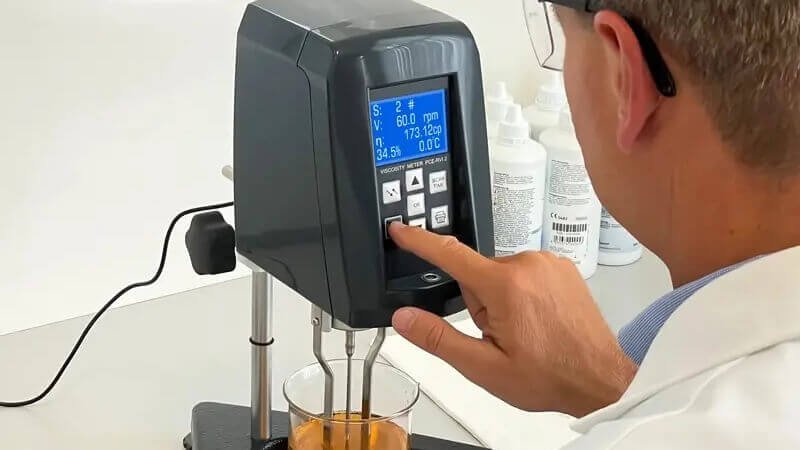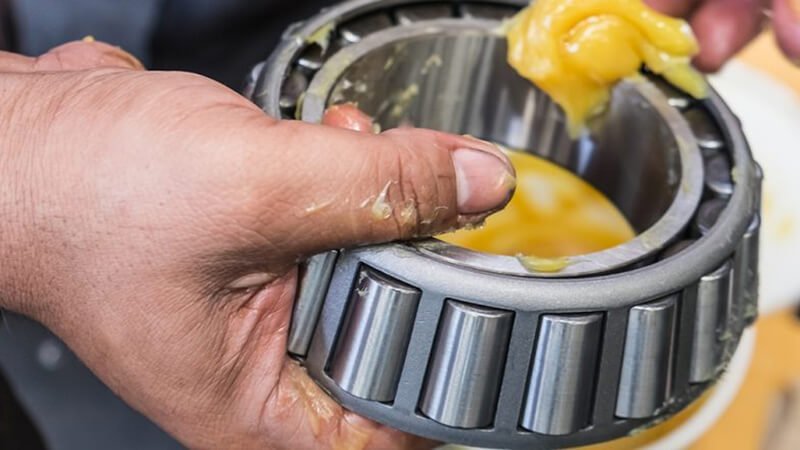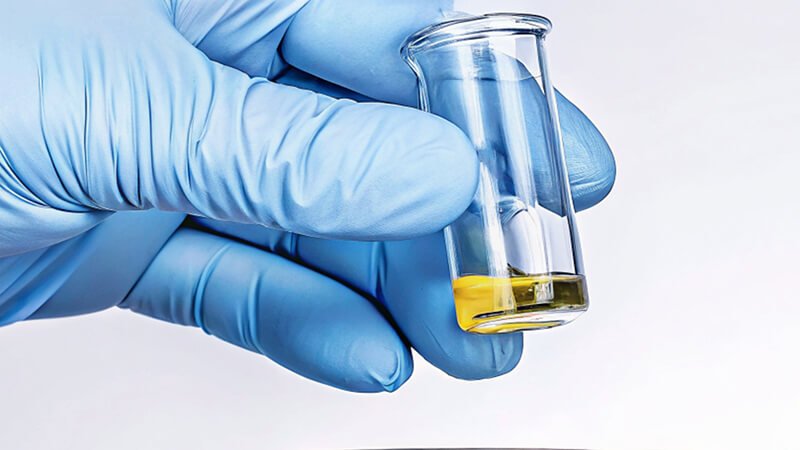Your suppliers talk about viscosity, but the term feels abstract. Choosing the wrong material based on a misunderstood spec sheet can cause production nightmares, wasting both money and resources.
The theoretical meaning of viscosity is a material's internal resistance to flow and deformation. It is a measure of fluid friction, describing how a fluid's molecules interact and resist moving past one another when a force is applied.
My name is Stefan Wang, and I am the owner of Martests. I have spent years helping business owners and purchasing managers, like my client Jacky in Italy, understand this fundamental concept. They are experts in sourcing, but sometimes the science behind the specs can be a barrier. Understanding what viscosity truly means is the first step to making better decisions, whether you are buying raw materials or the lab instruments to test them. This knowledge prevents costly mistakes and ensures the quality your customers expect. Let's break down this core concept into simple, practical terms.
What Is the Theory of Viscosity?
You need to explain viscosity to your team, but you struggle with the theory. This makes it hard to justify new equipment purchases or changes in material sourcing.
The theory of viscosity is based on fluid dynamics. It describes the internal friction between adjacent layers of a fluid that are moving at different speeds. This friction creates resistance to flow, which we measure as viscosity.
This might sound complex, but the idea is quite simple when you look closer. When I discuss this with my clients, I focus on two key points that make the theory practical for their business.
Isaac Newton's Idea
The basis for modern viscosity measurement comes from Sir Isaac Newton. He proposed that the force needed to move one layer of fluid past another is proportional to how fast the layers are moving relative to each other. We call this the relationship between shear stress (the force you apply) and shear rate (how quickly the fluid deforms). Viscosity is the number that connects these two things. A fluid with high viscosity needs a lot of force (stress) to make it move just a little (rate). Our rotational viscometers at Martests are designed to precisely measure this relationship for our clients.
What Happens at the Molecular Level
Imagine a fluid is made of tiny balls (molecules). In a liquid, these balls are close together and are attracted to each other by cohesive forces.
- Low Viscosity (like water): The attraction between molecules is weak. They can slide past each other easily.
- High Viscosity (like honey): The attraction is very strong. The molecules cling to each other, making it difficult for them to move.
Temperature plays a huge role here. When you heat a liquid, the molecules gain energy and move faster. This overcomes the attractive forces, so the viscosity goes down. This is why cold honey is so thick, but it becomes runny when you warm it up. Understanding this helps you control your processes.
What Is the Simple Explanation of Viscosity?
The scientific definitions are too complicated for a quick meeting. You just need a simple way to think about it. Without a simple analogy, you cannot communicate its importance effectively.
Simply put, viscosity is a fluid's "thickness." Water is "thin" because it has low viscosity and flows easily. Honey is "thick" because it has high viscosity and flows slowly.

This simple "thickness" analogy is the most powerful tool I use when talking to new customers. It instantly clarifies the concept. From there, we can dive into why measuring this "thickness" is critical for their business. The goal is to turn a feeling into a number. You can feel that syrup is thicker than juice, but you cannot build a quality control process on a feeling. You need objective data. This is exactly what a viscometer does. It provides a precise, repeatable number that represents the fluid's thickness. For example, my client Jacky knows that a specific cosmetic cream must have a viscosity of 12,000 cP to have the right texture. Our viscometers give him the confidence that every batch meets this exact standard.
Here is a table to help connect the feeling of thickness to real numbers:
| Fluid | Viscosity "Feel" | Typical Value (cP) at Room Temp. |
|---|---|---|
| Water | Thin | 1 cP |
| Milk | Slightly Thicker | ~3 cP |
| Olive Oil | Thicker | ~85 cP |
| Honey | Very Thick | ~10,000 cP |
| Peanut Butter | Extremely Thick | ~250,000 cP |
This table shows how a simple feeling corresponds to a huge range of numerical values.
What Is the Viscosity of a Material?
The term "viscosity" is often used as if it is one fixed number. This can be misleading when you read a spec sheet, because the value can change dramatically.
The viscosity of a material is a quantitative measure of its resistance to flow. It is a physical property, not a constant number, as it can change with conditions like temperature and pressure.

Think of viscosity like a material's color or density. It is a fundamental characteristic. However, unlike density, viscosity is extremely sensitive to external conditions. As a factory owner, I stress this point constantly. You cannot just ask "What is the viscosity?" without also asking "Under what conditions?"
Key Factors That Define Viscosity
When a customer from the Middle East asks for a viscometer to test their drilling muds, we immediately discuss the factors that will affect their readings.
- Temperature: This is the most important factor for liquids. As I mentioned, when temperature goes up, viscosity goes down. A product that is thick and stable in a cool European climate might become thin and runny in a hot warehouse in Southeast Asia. This is why many viscometers, including our Martests models, have temperature probes.
- Shear Rate (for some fluids): This is a more advanced but vital concept. Some fluids change their viscosity when you stir or mix them. Paint is a perfect example. It is thick in the can (high viscosity) but thins out as you apply it with a brush (high shear), allowing it to spread smoothly. These are called non-Newtonian fluids. Our rotational viscometers can test at different speeds to measure this exact behavior.
- Pressure: For most applications, standard atmospheric pressure is assumed. But in some industrial processes, like high-pressure pipelines, an increase in pressure can increase viscosity.
So, a material's viscosity is a dynamic property. You must define the conditions to get a meaningful and repeatable measurement.
What Does It Mean If a Material Has a High Viscosity?
A supplier's datasheet says their product has "high viscosity." You are not sure what this means for your process. Is that a good thing or a bad thing?
A material with high viscosity is thick, flows slowly, and resists movement. Think of materials like molasses, thick grease, or caulk. It requires more energy to pump and takes longer to settle.

Whether high viscosity is good or bad depends entirely on your application. I work with clients across many industries, and I see both sides of this every day.
When High Viscosity is Good
In many cases, high viscosity is a critical feature that makes a product work.
- Adhesives and Sealants: You need the glue or caulk to be thick so it stays where you put it and does not drip away before it can set.
- Lubricating Greases: High viscosity ensures the grease clings to moving parts, providing a durable protective film. A thin lubricant would just fly off.
- Cosmetic Creams: A face cream needs high viscosity to feel rich and luxurious, and to stay on the skin.
- Paints: The paint must be thick enough in the can to prevent pigments from settling, and thick enough on the wall to avoid drips.
When High Viscosity is a Problem
On the other hand, high viscosity can create significant challenges in manufacturing.
- Pumping: Moving a thick fluid through pipes requires powerful, expensive pumps and uses a lot of electricity.
- Mixing: It is difficult and time-consuming to blend thick materials together to create a uniform product.
- Filling: Dispensing a precise amount of a thick paste into a jar or tube can be a slow and challenging process.
Understanding these trade-offs is key for process design and sourcing. A rotational viscometer helps you find the sweet spot: a viscosity that is high enough for product performance but low enough for efficient manufacturing.
Does Increased Viscosity Mean Thicker or Thinner?
You are in a meeting and accidentally mix up the terms. You say "higher viscosity" but mean "thinner," causing confusion. It is an easy mistake to make in conversation.
An increased or higher viscosity number always means the material is thicker. A lower viscosity number always means the material is thinner and flows more easily. There are no exceptions.
This is the most important rule to remember. It is simple, direct, and universal. Let's make it perfectly clear.


